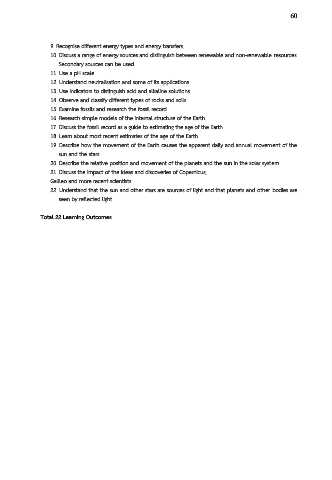Page 62 - เล่ม 65 ม.ต้น หลักสูตรสถานศึกษาโรงเรียนมงฟอร์ต
P. 62
60
9. Recognise different energy types and energy transfers.
10. Discuss a range of energy sources and distinguish between renewable and non-renewable resources.
Secondary sources can be used.
11. Use a pH scale.
12. Understand neutralisation and some of its applications.
13. Use indicators to distinguish acid and alkaline solutions.
14. Observe and classify different types of rocks and soils.
15. Examine fossils and research the fossil record.
16. Research simple models of the internal structure of the Earth.
17. Discuss the fossil record as a guide to estimating the age of the Earth
18. Learn about most recent estimates of the age of the Earth
19. Describe how the movement of the Earth causes the apparent daily and annual movement of the
sun and the stars
20. Describe the relative position and movement of the planets and the sun in the solar system
21. Discuss the impact of the ideas and discoveries of Copernicus,
Galileo and more recent scientists
22. Understand that the sun and other stars are sources of light and that planets and other bodies are
seen by reflected light
Total 22 Learning Outcomes

